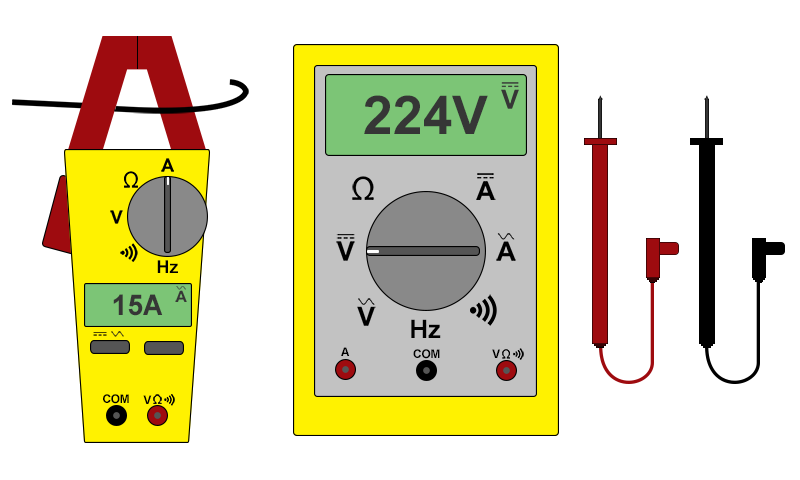Multimeters
Multimeters are the most important tool one has when working with electricity. A multimeter allows you to measure all of the important characteristics of a circuit or electrical system, which enables you to work safely and verify if a circuit is working correctly. There are many different types of multimeters that offer a variety of different functions. They range in cost dramatically as well. All multimeters, even cheap ones, should be able to perform the basic measurements that are required to do electrical work: voltage, current, resistance, conductivity and frequency. That being said, it is important to make sure that the multimeter you are using is rated for use with the highest potential voltage and current that you intend to measure. If a multimeter is not rated to function under the conditions of use, it could destroy the multimeter and potentially cause severe harm. Multimeters are classified into various categories that inform users about their ability to handle excess voltages and current. These ratings go from the lowest rating being Category I (for use with small electronics with limited current/voltage sources) to Category IV (for use at the connection to the utility grid and all outdoor conductors)[1].outdoor conductors coming from the utility grid). For small off-grid PV systems at least a Cat II - 600V multimeter is recommended and should be fairly cheap.
There are two main categories of multimeters: traditional handheld multimeters and clamp meters as seen below - each is explored in further detail in this article.
Multimeter categories
Multimeters are classified into various different categoriesinto different categories that classify the multimeters ability to handle
- ↑ Fluke Application Note on multimeter categories https://content.fluke.com/promotions/promo-dmm/0518-dmm-campaign/dmm/fluke_dmm-chfr/files/safetyguidelines.pdf
